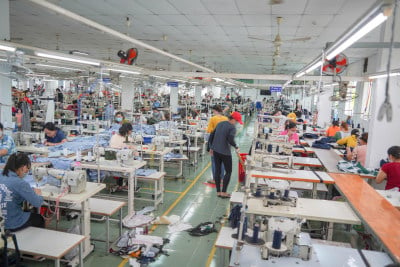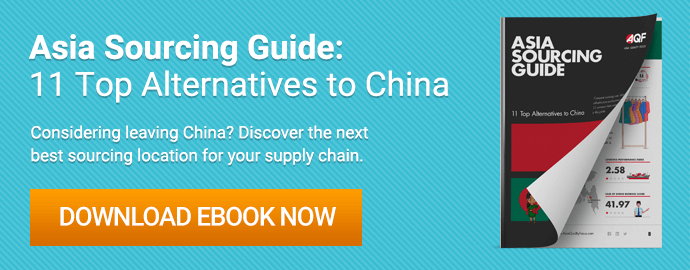 A big priority nowadays is maintaining product quality amidst supply chain disruptions. This is because the web of global supply chains makes maintaining consistency in product quality a formidable challenge when faced with problems. From delays to shortages, these disruptions can have far-reaching consequences. Still, rest assured that with the right approach to planning and proactive measures, you can absolutely weather these issues!
A big priority nowadays is maintaining product quality amidst supply chain disruptions. This is because the web of global supply chains makes maintaining consistency in product quality a formidable challenge when faced with problems. From delays to shortages, these disruptions can have far-reaching consequences. Still, rest assured that with the right approach to planning and proactive measures, you can absolutely weather these issues!
Understanding the impact of disruptions on products
Supply chain disruptions wreak havoc on product quality, causing delays, shortages, and compromised materials. When a supplier faces production issues, it may affect the timely delivery of crucial components, leading to production delays. Furthermore, scarcity in raw materials might compel manufacturers to substitute with worse alternatives, compromising the overall product. Recent disruptions, such as the Suez Canal obstruction and geographical conflicts, have magnified these challenges, highlighting the vulnerability of supply chains.
Proactive supplier management
Effective supplier management is  very important for maintaining product quality amidst supply chain disruptions. After all, businesses can navigate challenges more effectively by fostering transparent communication and nurturing strong relationships with suppliers. Diversifying the supplier base further mitigates risks, ensuring continuity in the event of disruptions. Naturally, try to look for suppliers that make use of the latest manufacturing developments, too. This both enhances product quality and improves supply chain resilience!
very important for maintaining product quality amidst supply chain disruptions. After all, businesses can navigate challenges more effectively by fostering transparent communication and nurturing strong relationships with suppliers. Diversifying the supplier base further mitigates risks, ensuring continuity in the event of disruptions. Naturally, try to look for suppliers that make use of the latest manufacturing developments, too. This both enhances product quality and improves supply chain resilience!
Inventory management and buffer stock
Optimal inventory management is a good approach to dealing with disruptions. Carefully balancing inventory levels enables businesses to make sure they have enough stock to meet demand without overstocking. Implementing just-in-time inventory systems can streamline operations and reduce excess inventory costs while maintaining buffer stocks, providing a safety net during disruptions.
Companies like Apple strategically plan their inventory to minimize the impact of disruptions, guaranteeing continuous production and quality. Similarly, maintaining buffer stocks allows businesses to weather unforeseen challenges, such as raw material shortages or transportation delays, without compromising on customer satisfaction.
Technology integration for visibility
Incorporating technology for supply chain visibility enhances resilience against disruptions. Businesses gain real-time insights into their operations by leveraging IoT sensors and blockchain. Walmart's use of blockchain technology improves transparency and traceability, enhancing product quality. With increased visibility, businesses can identify potential holdups or risks early on, allowing for proactive interventions. Besides, technology integration facilitates better communication and collaboration with suppliers, further enhancing resilience.
Flexibility in production processes
 Adaptable production processes are of great help in maintaining product quality. After all, implementing agile manufacturing methods enables businesses to swiftly adjust to changes in demand or supply. Utilizing flexible production lines and multi-sourcing strategies, companies can mitigate risks associated with disruptions. This flexibility allows businesses to pivot quickly in response to unforeseen challenges, assuring uninterrupted operations and consistent product quality. Moreover, agile manufacturing fosters innovation and efficiency, enhancing overall competitiveness in the market.
Adaptable production processes are of great help in maintaining product quality. After all, implementing agile manufacturing methods enables businesses to swiftly adjust to changes in demand or supply. Utilizing flexible production lines and multi-sourcing strategies, companies can mitigate risks associated with disruptions. This flexibility allows businesses to pivot quickly in response to unforeseen challenges, assuring uninterrupted operations and consistent product quality. Moreover, agile manufacturing fosters innovation and efficiency, enhancing overall competitiveness in the market.
Quality control measures
Implementing stringent quality control measures is imperative to guarantee product quality and customer satisfaction. Investing in product inspection and supplier audit helps businesses promptly detect and rectify deviations from standards. These measures both mitigate risks associated with disruptions and uphold brand reputation and consumer trust. In addition, regular laboratory testing and continuous improvement initiatives help businesses identify areas for enhancement and achieve consistency in quality.
Continuous improvement and risk assessment
Companies can identify vulnerabilities and implement proactive measures to mitigate risks by consistently evaluating and refining supply chain strategies. Toyota's use of Kaizen principles enables continuous supply chain resilience and product quality improvement. Conducting frequent risk assessments also allows businesses to anticipate potential disruptions and develop contingency plans accordingly. This proactive approach maintains readiness to address challenges as they arise, minimizing their impact on operations and product quality.
Collaboration and partnerships
Collaboration and partnerships  are key to mitigating supply chain disruptions and maintaining product quality. Businesses can access shared resources and expertise to address challenges collectively by forging alliances with stakeholders and industry partners.
are key to mitigating supply chain disruptions and maintaining product quality. Businesses can access shared resources and expertise to address challenges collectively by forging alliances with stakeholders and industry partners.
Collaborative efforts also facilitate information sharing and coordination, enhancing supply chain visibility and resilience. Lastly, partnerships foster innovation and drive continuous improvement initiatives, benefiting all parties involved.
Employee training and empowerment
Investing in employee training and empowerment is a great way of maintaining product quality. Providing comprehensive training programs lets companies equip their workforce with the skills and knowledge needed to navigate challenges effectively. A top moving company, Pro Movers Miami maintains the quality of its services despite issues like climbing operation costs by enhancing the excellence of its moving teams and logistical employees as much as they can.
This way, they’ve been able to excel in their industry since 2015 and are extremely reliable for all business or residential relocation needs! Empowering employees to make decisions and take ownership of their work also fosters a culture of accountability and innovation. Finally, cross-training employees enhances flexibility within the workforce, allowing them to adapt to changing circumstances and maintain productivity.
Communication strategies
 Establishing clear communication channels both internally and externally allows businesses to achieve seamless coordination and timely information sharing. Coca-Cola's transparent communication strategy during disruptions helps maintain consumer trust. This transparency allows businesses to address challenges and keep stakeholders informed about developments proactively. Likewise, establishing crisis communication protocols enables swift responses to disruptions, minimizing their impact on operations. This way, businesses can collaborate more effectively to mitigate procurement challenges.
Establishing clear communication channels both internally and externally allows businesses to achieve seamless coordination and timely information sharing. Coca-Cola's transparent communication strategy during disruptions helps maintain consumer trust. This transparency allows businesses to address challenges and keep stakeholders informed about developments proactively. Likewise, establishing crisis communication protocols enables swift responses to disruptions, minimizing their impact on operations. This way, businesses can collaborate more effectively to mitigate procurement challenges.
Scenario planning and contingency plans
Scenario planning and contingency plans are important components of resilience and quality management. Envisioning various disruption scenarios and developing corresponding contingency plans helps you prepare for potential challenges effectively. Johnson & Johnson's robust contingency plans helped them maintain pharmaceutical production during global disruptions.
These plans outline specific actions to be taken in response to different scenarios, letting businesses maintain readiness to address disruptions promptly. Of course, regular reviews and updates of contingency plans are necessary if you want them to remain relevant and effective in mitigating risks.
Leveraging strategies for maintaining product quality amidst supply chain disruptions
Maintaining product quality amidst supply chain disruptions requires a proactive approach and strategic implementation of various measures. Businesses can navigate challenges effectively by prioritizing transparent communication, investing in technology, and fostering collaboration. Additionally, continuous improvement, scenario planning, and employee empowerment are important in enhancing resilience. With these strategies in place, you can uphold product quality, mitigate risks, and emerge stronger in the face of supply chain disruptions!







